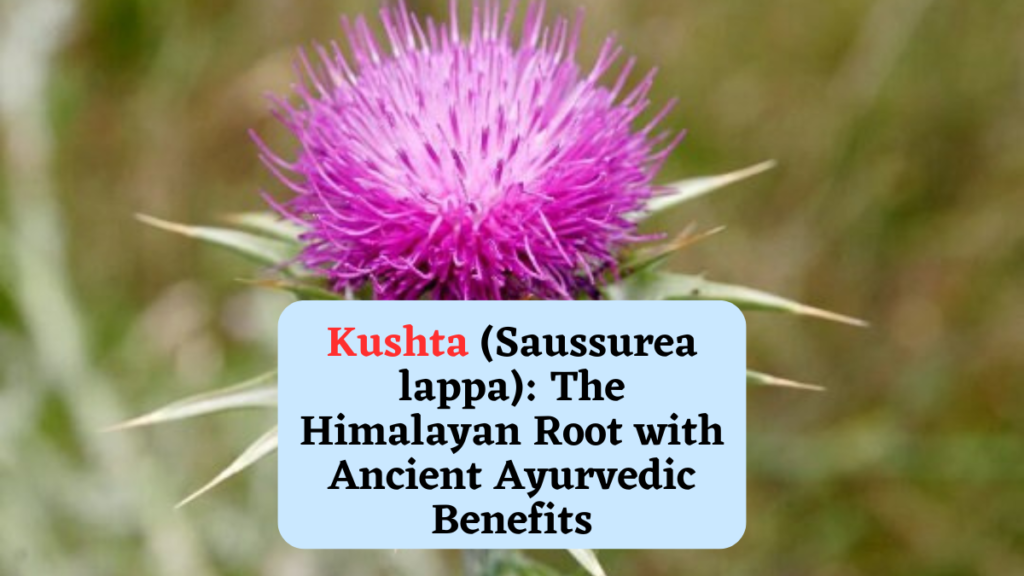Kushta (Saussurea lappa): The Himalayan Root with Ancient Ayurvedic Benefits
Introduction
Nestled in the high altitudes of the Himalayas grows a remarkable herb called Kushta, also known by its botanical name Saussurea lappa. This perennial plant, with its thick, robust roots, has held a revered position in Ayurveda for centuries.

A Gift from the Mountains
Ayurveda recognizes Kushta for its diverse therapeutic properties. People primarily use the root, often drying and powdering it for consumption or topical application. Traditionally, Kushta has been credited with:
- Soothing Respiratory Issues: People believe its expectorant properties help loosen phlegm and ease breathing, making it beneficial for coughs, colds, and asthma.
- Promoting Digestive Health: People say Kushta possesses anti-inflammatory and carminative qualities, potentially aiding in digestion and relieving abdominal discomfort.
- Supporting the Liver: Ayurvedic texts suggest Kushta’s role in liver health, possibly due to its antioxidant properties.
- Balancing Doshas: In Ayurvedic theory, practitioners consider Kushta to pacify Kapha and Pitta doshas, which are associated with imbalances manifesting as congestion, inflammation, and digestive problems.
The Modern Lens on Kushta
While centuries of traditional use hold weight, scientific studies are exploring the potential behind Kushta’s benefits. Research suggests the presence of various bioactive compounds that might contribute to its purported effects. However, researchers need to conduct more robust clinical trials to fully understand its efficacy and safety.
Important Considerations
It’s crucial to consult a qualified Ayurvedic practitioner before consuming Kushta. They can assess your individual needs and advise on proper dosage and potential interactions with other medications. Pregnant and lactating women, as well as individuals with certain medical conditions, may need to exercise caution.
Conclusion
Kushta, with its rich history in Ayurveda, offers a glimpse into the power of Himalayan botanicals. While scientific exploration continues, its traditional uses for respiratory, digestive, and liver support highlight its potential as a complementary therapeutic agent. Remember, consulting an Ayurvedic professional is vital before incorporating Kusht into your wellness regimen.
Kushta (Saussurea lappa) in Ayurveda: FAQ
What is Kushta?
Kushta, also known as Saussurea lappa, is a perennial herb found in the Himalayas. Ayurveda primarily uses its roots.
What are the benefits of Kushta in Ayurveda?
Traditionally, Kusht is used for:
- Relieving respiratory issues (coughs, colds, asthma)
- Supporting digestion
- Promoting liver health
- Balancing Kapha and Pitta doshas
Is there scientific evidence for these benefits?
Studies are ongoing to explore the potential behind Kushta’s benefits. The presence of bioactive compounds suggests possible explanations, but researchers need to conduct more studies.
How is Kushta used in Ayurveda?
People typically powder the dried root for consumption or topical application.
Is Kushta safe for everyone?
Consulting an Ayurvedic practitioner is crucial before using Kushta. They can advise on dosage and potential interactions with other medications. It may not be suitable for pregnant or lactating women or those with certain health conditions.
Where can I learn more about Kushta?
Consult a qualified Ayurvedic practitioner for personalized advice. You can also find general information from reliable online sources (avoid self-diagnosis or treatment).









